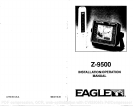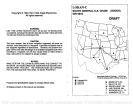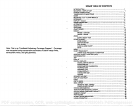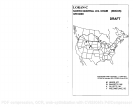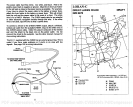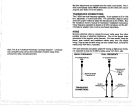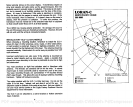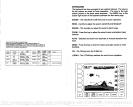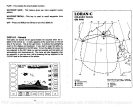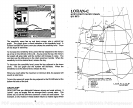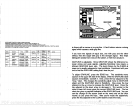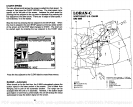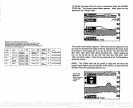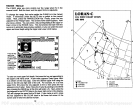
No other
adjustments
are
required
once the cable is connected. The Z-
9500
automatically
sends NMEA information out the white wire once it
acquires
and "locks on" to
the stations.
TRANSDUCER CONNECTIONS
The Z-9500 has dual
frequency capability.
It can
operate
at 50 or 192
kHz,
separately,
or
at the same time. The connection
diagram
below
shows the
proper
method to attach the
transducers to the Z-9500. See
1.
the transducer owner's manual for
transducer installation instructions.
If dual
frequency operation
is
desired,
a 50
kHz
transducer and the MY-
2 transducer
adapter
cable must be
purchased
separtately.
NOISE
Minimize
electrical noise
by routing
the
power
cable
away
from other
possible
sources of electrical interference. One of the
largest
noise
generators
is the
engine's wiring
hamess. For best
results, keep
the
power,
loran
module,
and transducer cables
away
from the
engine
wiring. Bilge
pumps
and
their
wiring
can also radiate
noise,
so
keep
the
cables
away
from
them,
if
possible.
VHF radio antennas
and cables radiate RF
energy
at
high power
levels.
Note: This is an
"Unofficialpreliminary Coverage Diagram". Coverage
It is
important
to
keep
the Z-9500's cables
away
from
them,
also.
was
computed
using
conservative estimates of station
range
limits,
__________________________________________________________
atmospheric noise,
and
grid
geometry. SINGLE FREQUENCY DUAL
FREQUENCY
rr
CONNEcTOR ON 1' coNNEcToR ON
95cc
95O
•
•
TRANSDUCER
ADAPTER
CABLE
(MY-2)
TRANSDUCER
—.192
kHz or5O kHz
11(llt4LISlk1
II
192kHz
I
50kHz
TRANSDUCER
TRANSDUCER
TRANSDUCER
CONNECTIONS
"N.
—
I.
ii
3
PDF compression, OCR, web-optimization with CVISION's PdfCompressor



